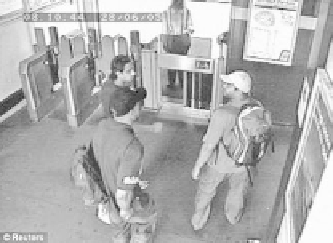Geoscience Reference
In-Depth Information
Pr u d e n Ti Al P l Az A, n e w Ar k , n e w J e r Se Y
It was the Prudential Plaza area that al-Hindi wished to target with his Gas
Limo Project. The plot consisted of loading a black car—the type used to
drive company executives—with gas cylinders, poison gas, and explosives.
al-Hindi believed that the black car would blend in with the others. Also, by
using a black car, it cut down on the awareness of the security force, as they
were under the impression it was just another car for another executive. He
wrote, “The most obvious technique to utilize...if you do not mind history
repeating itself, would be a limousine in the V.I.P. underground car park with
all except the front seats removed.... Moreover, an added benefit of utilizing
this method is that the underground V.I.P. car park is situated directly under-
neath the center of main offices that rise up.”
7
At the conclusion of his 37-page report on the Prudential building and plaza
alone, he summed up what was the overarching theme of his surveillance on all
the targets. He wrote, “I have not left any stone unturned in my investigation, and
have spent countless weeks, days, hours, and months poring over literature as well
as exploration in order to finish this report/presentation to the highest possible
standard.”
7
Rehearsals
The last aspect of intelligence collection is conducting rehearsals to familiarize one-
self with the target area and also the mode of the attack. Terrorist agents will con-
duct a “dry run” or rehearsal of planned actions at the attack location in order to
see if what was laid out on paper is deliverable in the real world.
Before conducting his Bojinka plot,
Ramzi Yousef boarded a Philippine
Airlines flight in Manila, assembled his
device after successfully boarding the
plane, and deplaned the aircraft during
a layover, leaving the device under his
seat. It detonated during the next leg of
the flight, while the plane was in-transit,
killing the Japanese national who occu-
pied Yousef's seat and injuring several
others.
8
On June 28, 2005, at least three
of the 7/7 bombers (see photo)—two of whom were wearing backpacks—carried
out their dry run of the London Underground network. This allowed them to test
the vigilance of security personnel and civilians at their initial embarkation point

